
In October 2019, Danish-Trinidadian artist Jeannette Ehlers raised a flag in the old colonial harbour in Nuuk in Kalaallit Nunaat (Greenland) as part of the FLAG/ERFALASOQ project curated by Gudrun Hasle and the Nuuk Art Museum. Against the flag’s white background, the following words were handwritten in large black letters: “Until the lion has their historian, the hunter will always be a hero.” It was not the first time this African proverb had appeared in Ehlers’s art.
Ten years previously, she included a photograph of the proverb in the catalogue for her first major solo exhibition, Atlantic, at Kunsthal Aarhus in 2009. The photo was taken in a dungeon at Fort Prinzenstein in Ghana. Someone had written the text directly on the wall of this fort, which was built in 1784 by the Danish-Norwegian colonial authorities as part of the infrastructure of the transatlantic enslavement trade.
The proverb was subsequently incorporated into one of Ehlers’s artistic interventions in the Royal Cast Collection, housed in the West India Warehouse on the Copenhagen waterfront. And now, the message fluttered on a flag in Nuuk, right next to a statue of Hans Egede, the missionary who set up the Danish-Norwegian colony in 1721. Like proverbs spreading by word of mouth, the meaning of the text in Ehlers’s work changes depending on the contexts in which it speaks. From Ghana to Denmark to Kalaallit Nunaat, various “lions” and “hunters” are being hailed in struggles for independence, self-determination, and self-assertion in the face of colonialism’s still-unfinished histories.
Ehlers is one of many artists in the Nordic countries who, over the past decade, have fought to make room for voices and experiences that have been marginalised, ignored, or written off in various majoritarian contexts. The 2010s may be called the “Lions’ Decade,” to stay with Ehlers’s metaphor. Artists drawing on Black, Indigenous, feminist, queer, ecocritical, and decolonial perspectives have most emphatically set the agenda for some of the decade’s most important discussions. But even though the “lions” have grown in number and their critical voices have been strong, this has also been a decade where the lamentations of the “hunters” have been loud and strong, and where demands for structural change have been met with repressive tolerance and exoticising inclusion at best, but are more often confronted with fierce resistance and outright rejection.
When these critical engagements with structures of power have reached the mainstream media, the art and the critique alike have often been framed as manifestations of so-called identity politics, political correctness, or snowflake sensitivity. Art critics too have been prone to such reductive frameworks. Some have even claimed that aesthetic autonomy is being “suffocated” by “ideas about propriety,” as German critic Hanno Rauterberg put it in 2017 when the Danish newspaper Information cleared its front page to convey his frustrations with how “the old struggle for form, composition, and originality” has been replaced by a “segregating attitude” where art “is approved on the basis of the artist’s biography.”(1)
Statements like these not only ignore the specific gendered, racialised, and class-related dynamics that still structure the so-called autonomous art field. The criticism also overlooks the prominent role that questions of aesthetics and autonomy play in these discussions. Ehlers’s flag is no exception. Like her evocative video works and hard-hitting performances, this work also draws on a diasporic or Afropean aesthetic, where West African and Caribbean narrative traditions connect and clash with Western symbolic traditions.(2) The work also flags the importance of self-determination and minoritised voices setting the terms themselves in the writing of history. In other words, the question of autonomy remains central, but its aesthetic and political dimensions cannot be considered and envisioned independently of each other.
Ehlers’s flag addresses head-on issues central to all the contributions to Kunstkritikk’s series of essays on the art field in the Nordic countries in the 2010s: the significance of who is (not) invited to write contemporary art histories, where those histories are written from, and what perspectives, positions, and terms are given space and priority. If the violent undertones of the hunting metaphors underpinning the proverb in Ehlers’s work might appear somewhat dramatic in a context like this, that may be because many of us white middle-class critics, who have the easiest access to forums like this, do not necessarily connect questions of representation or history writing with economic, cultural, or material struggles for survival. As the artist niilas helander points out in the essay ‘A Brief Critique of Everything that Exists’ (2020) in Kunstkritikk, issues about class are rarely addressed in the art field. And if they are, the working classes are usually not invited, which means that the proceedings do not deal with the “material conditions needed to take part in the art world … where self-exploitation and unregulated working conditions are more of a rule than an exception.”
The discussion of a more inclusive art field must begin by addressing the fundamental material, economic, and value-based hierarchies that structure the art world as well as society, a point which Zofia Cielatkowska has also taken up in the commentary ‘Decolonising Art Criticism’ in Kunstkritikk earlier this year.
A text like mine does not evade the issues that Ehlers, helander, and Cielatkowska address. Writing about colonial dynamics or racist logics in the art field is not tantamount to engaging practices with decolonial or anti-racist effects. I have tried to “stay with the trouble,” to paraphrase one of the most-cited theorists of the 2010s, Donna Haraway, and have sought to witness works and events that raise questions of responsibility and accountability in and around the art field.
I am interested in what the Austrian philosopher Oliver Marchart calls “conflictual aesthetics,” a term denoting how artists use aesthetic means to reflect on, respond to, or contribute to social justice movements. In the book Conflictual Aesthetics: Artistic Activism and the Public Sphere (Sternberg Press, 2019), he discusses the widespread prejudices against such forms of artistic activism, and criticises the dominance of Jacques Ranciére-inspired positions that have suggested that art’s political potential is best served by maintaining a safe distance to political movements or practices that disturb the faith in the relative autonomy of art. For Marchart, the Occupy Wall Street movement constitutes a prominent alternative to these “anti-political ideologies” of the art field, as its use of complex forms of “propagation,” “agitation,” and “organisation” has given way to new social and political antagonisms in the global struggle for justice in the 2010s.
The Occupy movement has not been alone in this. The revolutionary mobilisations of the so-called Arab Spring at the beginning of the decade, and transnational social justice movements such as Idle No More (2012–), Black Lives Matter (2013–), Rhodes Must Fall (2015–), #noDAPL (2016–) and #MeToo (2006 / 2017–) have been important catalysts for the emergence of new voices, positions, and frictions that, together with locally situated stories and struggles, have expanded and challenged the political geometry of the art field, including in the Nordic countries. It is this kind of agitational aesthetic that sets the stage for my reflections on the 2010s, where I have sought to bear witness and respond to aesthetic and political movements that remain in motion today.
Redistributing responsibility
In 2018, a number of anonymous posters appeared in the streets of Copenhagen. Against a blue background, large white letters exclaimed: MULTICULTURALISTS, PLEASE DEAL WITH THE DANISH RACISM AND LEAVE US FOREIGNERS ALONE! My Facebook feed informed me that the artwork was made by the Copenhagen-based artist Nermin Duraković. The design and rhetoric of the work responded to the artist group SUPERFLEX’s famous poster-based artwork, FOREIGNERS, PLEASE DON’T LEAVE US ALONE WITH THE DANES (2002). SUPERFLEX’s flippant plea to “foreigners” to stay put in the country and act as a prophylactic against bourgeoning Danish nationalism was posted in various Danish and European cities and distributed free of charge to visitors to the artist group’s exhibitions.

SUPERFLEX’s work was made in response to the developments in Danish immigration and integration debates following the so-called “system change” in 2001, when the newly appointed prime minister, Anders Fogh Rasmussen, set the course for a pronounced turn to the Right in Danish politics. Although the poster reproduced the media’s reductive distinction between “Danes” and “foreigners,” the work’s immediate appeal appeared to do with its pronounced disidentification with nationalist ideas of community.(3) Instead, the poster spoke from and to a cosmopolitan (art) public aspiring to go beyond politicising and polarising perceptions of identity.(4)
When Duraković’s poster appeared in Copenhagen more than fifteen years later, the political turn to the Right had become the new normal and SUPERFLEX’s work had long since been installed in the National Gallery of Denmark’s permanent collection as a key work of the 2000s. In short, Duraković’s poster seemed to serve as an historical update and a political critique of both SUPERFLEX’s work and the Danish art field which embraced it. In the new poster, it is not the “foreigners” who are asked to make Denmark a more tolerable country. Rather, it is the so-called “multiculturalists,” such as SUPERFLEX, who are urged to put an end to racism in Denmark.
The poster points to a need for a redistribution of labour and responsibilities, testifying to a yearning for clearer stances among the (white) art crowd who have gladly hung a SUPERFLEX poster on the wall, but who otherwise rarely seem to contribute to the fight against racism. Duraković’s choice to address “multiculturalists” instead of “foreigners” also reads as a retort to the cynical irony that permeated SUPERFLEX’s original message. The perpetual and fatal tightening of Danish asylum and immigration legislation over the last decades has long ensured that (mainly racialised) foreigners have ever-decreasing influence on whether they can stay in Denmark at all, even if they want to.
Art in a time of war
Duraković’s intervention should be seen within the context of his broader artistic practice, spanning almost twenty years, where he has used drawings, photographs, and installations to examine and address the increasingly inhumane conditions that asylum seekers are subjected to in the Danish internment camps. His works have been featured in many of the noteworthy exhibitions addressing the Danish and European deportation regime, from Denmark 2010: A Guide to the Nation for the ‘Happiest People in the World’ (2010) at Overgaden Institute of Contemporary Art, to the recent exhibition Drawings of Camps (2019–2020) at Hospital Prison University Archive in Copenhagen.
In the exhibition Denmark 2010, curated by Katarina Stenbeck and Katrine Bolt Rasmussen, Duraković was not the only one to use the asylum system as a prism for diagnosing the transformations of the welfare state during the endless war on terror. In Julie Edel Hardenberg’s installation Application for Asylum (2010), a three-metre-long Danish flag served as the backdrop for seven white crosses made up of the seven-page application form used to apply for asylum on humanitarian grounds. While Hardenberg’s work, which builds on her long-standing critical engagement with the politics of national-colonial symbols, addressed the necropolitical aspects of the ‘humanitarian’ bureaucratic system, Joachim Hamou confronted these inequalities head on in the installation Free Coffee (2010), which consisted of a booth outside the art space where asylum seekers served coffee to passers-by in the street. The free coffee was accompanied by information on how asylum seekers are not allowed to work for money while their applications are being processed – a process that often can take several years. In contrast to SUPERFLEX’s free poster, the relational structure of Hamou’s project made it impossible to grab a cup of coffee without being confronted with one’s own complicity and participation in the welfare state’s racialised (affective) economy.
In October 2008, the large-scale civil disobedience campaign Luk Lejren (Close the Camps) strove to close down the asylum seekers’ arrival centre in Denmark, the Sandholm camp, in protest against the structural racism that the place both symbolises and enacts.(5) The action proved to be an important catalyst for new initiatives that extended into the field of art, such as the working group known as Asyl Dialog Tanken (The Asylum Dialogue Think Tank), which played a key role in the establishment of Trampoline House in 2009–10.(6) The artists Morten Goll and Joachim Hamou as well as curator Tone Olaf Nielsen were central to the establishment of this community centre, which still aims to provide a place of refuge where asylum seekers, asylum activists, and others can meet in a “community of equals.” (7) In stark contrast to the pacifying and segregating framework in the state-operated internment camps, Trampoline House’s user-driven initiatives have become something of a sandbox for new modes of democratic participation and for what they term “sustainable integration.”
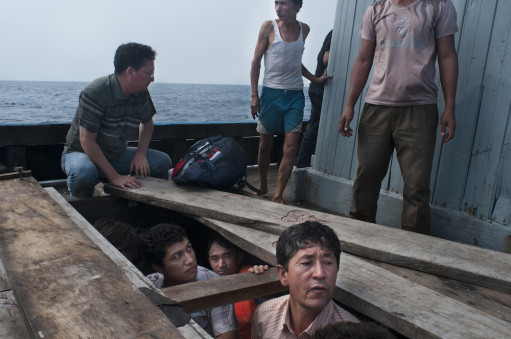
From its contextual starting point in activist art, the institutionalisation of Trampoline House has precipitated a movement towards the diversity industry. To some, this shift has changed the function of Trampoline House as a “place of refuge.”(8) But in spite of, or perhaps because of, the friction-filled functions of Trampoline House, it remains an indispensable focal point of (counter)cultural discussions on asylum politics, integration, and assimilation – and art. The latter has been aided by the independent exhibition venue CAMP: Center for Art and Migration Politics, which opened inside of Trampoline House in April 2015 by the group Kuratorisk Aktion (Curatorial Action) consisting of curators Tone Olaf Nielsen and Frederikke Hansen. CAMP primarily presents art that contributes to greater understanding of the relations between “migrants and those who receive them,” and helps to develop new visions for a more inclusive and equitable migration and asylum system.(9)
The opening exhibition Camp Life: Artistic Reflections on the Politics of Refugee and Migrant Detention (2015) exemplified the venue’s practice of presenting established artists, such as Duraković, side by side with less exposed figures such as Barat Ali Batoor, Murtaza Ali Jafari, and Masimo de Maximo.
The exhibition also included the work Captured Outside (2015), which consisted of a guerrilla radio station produced by the Trampoline House Women’s Club in collaboration with the artists Nanna Katrine Hansen, Habib Mohseni, Blake Shaw, and Kipanga Typeson. If you tuned in to the five micro-FM radio stations scattered around the gallery – and if you’d brought your own headphones – you could listen to unsettling testimonies of women in Danish asylum centres relating experiences of sexism, abuse, and racism, including from camp staff. The form and structure of the work ensured that the message reached only those who made an active effort. The installation underscored the fact that these stories are neither easy to tell nor easy to hear; they are not primarily created for a capricious art audience, but every bit as much for the Trampoline House’s own users. In this way, Captured Outside effectively disturbed the ways in which minoritised subjects are often expected to make their stories accessible and intelligible to a public that is not necessarily willing or able to listen.
The Limits of Solidarity
Depressingly, one often needs a white man to get a message across. Danish author Jonas Eika seemed very aware of the media’s racialised and gendered attention economy when, in October 2019, he delivered his acceptance speech upon receiving the Nordic Council Literature Prize for his collection of short stories Efter solen (After the Sun, 2018). Speaking to an audience that included Danish Prime Minister Mette Frederiksen, Eika delivered a speech that explicitly addressed “the racist and Islamophobic nationalism currently emerging in the Nordic nation states,” a nationalism “dependent on whiteness, on a notion of the white majority’s exclusive right to national prosperity and security.”(10) Eika not only addressed the paradox that Frederiksen, “the self-styled children’s prime minister,” promotes policies that “expose both children and adults to slow, degrading violence in the country’s so-called Departure Centres,” he also clearly distanced himself from Danish “state racism.”

As is so often the case, it was Eika’s use of the dreaded “R-word” that grabbed the limelight in the ensuing debate. Although the speech was celebrated and condemned in equal measure, his vehement critique seemingly has not had any adverse impact on his artistic career – quite the contrary. But things were different when Danish artist and art historian Emil Elg gave a similar speech three years earlier at the Workers’ Museum in Copenhagen.
In the autumn of 2016, Elg was invited to contribute to the group exhibition En blank og vårfrisk dag – fællesskab og solidaritet i samtidskunsten (A Clear and Fresh Spring Day: Community and Solidarity in Contemporary Art, 2016–17), curated by Kasper Lynge Jensen – an exhibition that also featured the artists Christian Falsnaes, Hesselholdt & Mejlvang, Mads Westrup, Thierry Geoffroy, Gavin Turk, and Gitte Christmas. Elg’s contribution consisted of a performance-lecture during the official opening, which was to be shown subsequently as video documentation in the exhibition.
Speaking from the pulpit in the Workers’ Museum’s Banquet Hall, a place steeped in tradition, Elg presented an analysis of the old Social Democratic workers’ song from which the exhibition borrowed its Danish title – ‘Naar jeg ser et rødt Flag smælde’ (When I See a Red Flag Billow, 1923). Having read out the lyrics in full, Elg asked the questions: “Who does the singer in this song feel solidarity with? And what kind of community is actually being advocated?”(11)
Referencing the Communist anthem ‘The Internationale’ (1871) in comparison, Elg’s textual analysis lingered on the “ambivalent tone of Danish song, where the road to community goes via the family, [and] the road to the world goes via the nation state.” He concluded by using the song’s national framework for community and solidarity as a springboard for commenting on some recent statements made by the then-recently elected Social Democratic leader, Mette Frederiksen. According to Elg, Frederiksen’s political framework sought to “establish animosity between the Danish underclass and the non-Western underclasses.” Through a critique of Frederiksen’s white nationalist understanding of class politics, Elg concluded that in its Danish incarnation, the Social Democratic ideology is a “racist ideology,” and that “Mette Frederiksen is a racist” who would, in her possible future position as prime minister, in all likelihood “seek to present the coloured foreigners [mørke udefrakommende] as threats to the Danish underclass.”
Although Elg’s performance-lecture was documented, the video was never exhibited as planned. After the official opening, the director of the Workers’ Museum, Søren Bak-Jensen, ordered the curator to remove all traces of the work in the exhibition, including in the press and promotional materials. Elg also lost his job as the exhibition’s house artist, and after a few days the curator was released from his contract, too. In the newspaper Information, Bak-Jensen justified the censorship of Elg’s work by stating that the speech’s “violent personal attacks” appeared “unjustified and presumably stood in violation of Danish libel laws,” and that the work had “no relation to the overall idea of the exhibition.”(12)
For his part, Elg stated that it was “food for thought that it takes so little to reduce the citizens’ freedom of speech to absolutely nothing,” while also problematising how one clearly “cannot use racism as an analytical model to speak about the racism present in our society.” The brief, but intense, media discussion that followed was mostly concerned with the seemingly unreasonable nature of Elg’s “accusations of racism” against Frederiksen, and not, for example, the unreasonable fact that an artwork was censored and removed from an exhibition and that the artist and curator were both fired.(13) Denmark’s many staunch advocates of freedom of speech – who, just a few years earlier, in 2014, had championed Swedish provocateur Dan Park’s right to exhibit his posters in the Danish Parliament, Christiansborg, after he had been convicted in Sweden for inciting hate against minorities with his works – remained conspicuously silent.
Overall, Elg found little support in the art community.(14) Information even condoned the censorship of his work in an editorial bearing the title ‘Nonsense Is Nonsense’, which not only questioned whether the performance-lecture could even be called a “work of art,” but also scoffed at the artist’s attempt to highlight the irony that he, as the only non-white artist in the exhibition, was dismissed for speaking about racism.(15) Although the publishing house Nemo subsequently published the performance-lecture in a book format, thereby helping to give the work an afterlife, this episode has only recently been read and inscribed into a wider context of “white fragility” in the art institution, as seen in the feminist decolonial collective Marronage’s article ‘The white gaze within the structure’ (2019), which addresses, among other things, conditions in the Danish art system which make it difficult for PoC artists to survive and thrive.(16)
The racist premise of freedom
Elg’s performance-lecture is just one among many examples of how anti-racist positions and projects – rather than actual expressions of racism – have been portrayed as a threat to mainstream arts and media publics. This dynamic was also central to the so-called “whiteness debate” that unfolded in the Danish literary field during the spring of 2014 in the wake of Swedish poet Athena Farrokhzad’s criticism of the ways in which the “white literary public” embraced Yahya Hassan’s first collection of poems.(17) Later discussions – prompted by subjects such as newly edited versions of children’s books by Astrid Lindgren and Halfdan Rasmussen, or the use of the N-word and blackface in Madame Nielsen’s performance Black Madonna (2018) at Teater Sort/Hvid – have followed the same polarising and simplified template, where those who criticise structural racism are proclaimed as the real perpetrators of racism, while those who profess to be ‘colour blind’ are given “access to perceive themselves as transcending racism,” as adoption researcher Lene Myong so succinctly expresses it.(18)
In the text ‘Frihedens racistiske præmis’ (The Racist Premise of Freedom, 2014), Myong raised a number of important questions regarding the effect of proclamations that anti-racist practices are undermining the core values of democracy and increasingly denounced as “totalitarian, hypocritical, oppressive, and, ultimately, racist.” “Why,” Myong asks, “is it that when one wants to strike a blow for ‘freedom of speech’, one turns to racism as the ultimate example of how this ‘freedom’ can be exercised and protected? Why is racist provocation the very medium through which ‘freedom’ is best manifested these years? This raises even more questions – not only regarding the status of racism in Danish society, but also on what can even be recognised as ‘freedom’?”(19) These are questions that still beg an answer, for in recent years the discourse on the “anti-racist racists” appears to be gaining an even firmer foothold in academic, political, and cultural discussions.(20)

The tendency to overlook or downplay the fact that systemic racism is rooted in an unequal distribution of power and opportunity – and thus of freedom – became frighteningly clear in Norway on the occasion of the political attacks launched against the play Ways of Seeing (2018), by Pia Maria Roll, Hanan Benammar, Sara Baban, and Marius von der Fehr, produced at Black Box in Oslo. As described in the programme, the play directed its spotlight on “the networks that are interested in making Norway a more racist society.” The play sought to bring important and difficult questions to the table, questions about the normalisation of Islamophobic and racist modes of thinking during the years following the greatest terrorist attack in Norway since the Second World War, an attack carried out by a right-wing extremist.
The debate took an even more serious turn when the Norwegian minister of justice’s partner reported the artists behind Ways of Seeing to the police for having violated the couple’s privacy. The presumed violation was due to the inclusion of a blurry screen shot from Google Street View of the façade of the couple’s private residence in the performance. The minister’s partner claimed that this had triggered a series of threats and attacks against their house and car. The vandalism prompted Norwegian Prime Minister Erna Solberg to condemn Ways of Seeing – which she had not seen – for compromising the privacy and integrity of politicians. However, the police investigation eventually resulted in the minister’s partner being charged with having staged the vandalism against their home and possessions herself. Even after the minister of justice resigned, the prime minister maintained her criticism of the artists behind the performance.
Unfinished History
“We see you, all you rulers and authorities, who exploit us and play us off against each other on a daily basis; we see you, you pen-pushers who blindly follow laws and foster desperation; and we see the system that does violence to bodies in the name of normality,” wrote the collective Marronage in a manifesto published in the first issue of its journal, released in the spring of 2017.(21) The publication was a contribution and response to the events marking the centenary of Denmark’s sale of its Caribbean colony, the Danish West Indies, to the United States in 1917. Considering the tradition of colonial ignorance in Denmark, this commemoration of a transfer of one colony and its population from one colonial power to another received a surprising amount of attention, serving as a catalyst for discussions on memory politics and institutional renegotiations of – primarily Danish – history and the Danes’ self-image.(22) In the midst of this showdown with the past, Marronage strove to make people remember that “the structures and systems of coloniality are all around us.”

Few voices from the former colony were invited to contribute to the many discussions and initiatives launched in 2017. Among them was the artist La Vaughn Belle from St. Croix, who presented the solo show Ledgers for a Lost Kingdom (2017) at the venue Meter in Copenhagen and also presented works at several group exhibitions at various Danish art institutions. Another was Monica Marin from St. Croix, who curated Invisible Heritage (2017), a group show hosted by the pop-up initiative “The West Indies Cultural Embassy” in Frederiksberg.
The exhibition featured works by a number of the US Virgin Islands’ leading contemporary artists such as Oceana James, Jon Euwema, Gerville Larsen, David Berg, Niarus Walker, and Janet Cook-Rutnik, as well as Belle. The exhibition did not treat the colonial period as a historical topic, but rather as a still-unfinished process and inescapable precondition. The contextual framework of the Invisible Heritage exhibition also pointed to the economic and cultural relations of dominance that still frame the relationship between Denmark and the Virgin Islands. The exhibition took place on the first floor of an old building with small rooms in Frederiksberg, a place not intended for the display of art, and was produced on a shoestring; the dire financial straits prevented the shipping of larger works, and the show essentially had to make do with what could be crammed into the curator’s luggage.
Invisible Heritage was also overlooked by the media when it took place, and has been ignored in subsequent discussions about the 2017 commemorative events (23). Even here at Kunstkritikk it was said that Denmark did not have a single exhibition where perspectives from the Virgin Islands took centre stage and “the angle is still as white as it can possibly get.”(24). Even relevant whiteness critique runs the risk of rendering invisible the important exceptions that prove the rule.
Although many have feared (or hoped) that the renewed engagement with the politics of coloniality seen in 2017 would quickly wane, there is much to suggest that these conversations have come to stay. La Vaughn Belle and Jeannette Ehlers’s seven-metre statue I Am Queen Mary (2018), placed outside the West Indies Warehouse in Copenhagen has done its part to disturb Danish colonial ignorance. The monument serves as a locus for the memory of Black resistance against colonialism. While the work’s title references “Queen” Mary Leticia Thomas, one of the leaders of “Fireburn,” the landmark workers’ revolt on St. Croix in 1878, the statue also speaks to the ongoing fight against colonial dynamics and racist policies, a fight highlighted by the march staged by Black Lives Matter Denmark to coincide with the statue’s unveiling on March 31, 2018.
A process of institutional awakening has also taken hold. The Royal Danish Library in Copenhagen has continued its work of digitising its colonial image archives, making them easier to access across borders, and the library is just one of many institutions seeking to contribute to a growing “digital infrastructure that helps share stories that haven’t been shared before.”(25) The National Gallery of Denmark has initiated a process of critically rethinking its collection, exhibitions, and purchasing policies in light of its role as a national gallery operating in today’s (post)colonial landscape. And in Norway, museums such as the Nordnorsk Kunstmuseum in Tromsø, working in collaboration with the RiddoDuottarMuseat in Karasjok, have focused on Norway’s colonial history and the exclusion of Sámi art from Norwegian institutions.

While museums are trying to unlearn old logics and structures, collectives such as Marronage have continued both their institutional critique and political practice of linking historical and contemporary structural inequalities and power dynamics through publications, events and interventions. Drawing inspiration from those who managed to flee slavery and establish alternative hidden societies of organised resistance – known as the practice of ‘marronage’ – the collective’s work supports minoritised groups who seek to conduct their struggle for freedom on their own terms: “Even under the most powerless and hopeless circumstances there is always … a strategy of resistance available.”
Decolonisation is not a metaphor
In 2017, a sign was planted near the small island of Čearretsuolu in the border river Deatnu (Teno), which connects the Norwegian and Finnish parts of Sápmi. With text in English and Northern Sámi, the sign says: MORATORIA / SÁMÁIDAHTTON GUOVLU / DECOLONIZED SAAMI AREA / KOLONIÁLA LÁGAT EAI FÁMUS / COLONIAL LAWS NOT APPLIED. Similar signs have appeared in several other places in Sápmi in recent years, part of the “moratorium kit” devised by the artistic community-based project The Moratorium Office’s “advisory service for decolonial self-determination.”
The Moratorium Office was launched by Sámi artists and activists Niilas Holmberg, Outi Pieski, and Jenni Laiti / Suohpanterror in collaboration with the Ellos Deatnu! (Long Live Teno) movement, which has fought against an agreement signed in 2016 by the Norwegian and Finnish governments to regulate the right to fish in the river. Protesting against the new regulations, which they argue “threaten the wellbeing of the Sámi from the Deatnu Valley,” and “represent a clear violation of human and indigenous rights,” Ellos Deatnu! declared a moratorium at Čearretsuolu – meaning a “suspension of a law, activity or process within a certain area,” paving the way for temporarily “introducing another regime, for example one based on Sámi concepts of justice and Sámi customary law.”(26).
According to the collective, the process behind the new regulatory agreement was in violation of constitutional clauses as well as ratified agreements, such as the UN Declaration on the Rights of Indigenous Peoples and the ILO Convention No. 169. The moratorium is therefore maintained until the states open up new negotiations led by Sámi people. In contrast to Norway and Finland’s approach to the Deatnu as a border river and a tourist magnet that can be monetised, the moratorium obstructs the colonial extractivist machinery so that the river may retain its function as a connecting waterway between people, land, and traditions. This responsible (and response-able) approach to land and water is also at the heart of the eight stanzas of poetry that Holmberg, Pieski, and Laiti placed on large signs along the Deatnu in the installation Rájácummá / Kiss from the Border (2017–18), which includes lines such as “gažaldat eana, vástádus eana” (land is the question, the answer is land) and “váldit dušše maid dárbbaša” (only take what’s needed).

Since 2018, The Moratorium Office has toured Sápmi with its offer of decolonial guidance, aiding local societies to declare moratoriums, indigenise their regions, and promote self-determination. The project has also been featured at art institutions, for example in Pieski’s solo show Čuolmmadit (To tie many knots, 2018) at EMMA: Espoo Museum of Modern Art in Finland and at Bergen Assembly’s Actually, the Dead Are Not Dead (2019) in Norway. Like Máret Ánne Sara’s interdisciplinary art movement Pile o´Sápmi (2016–), The Moratorium Office also takes on new meaning as it transitions from site-specific interventions to the gallery space.(27) In exhibitions such as Čuolmmadit, where The Moratorium Office is presented through photographs, video, text, and graphic prints, the project changes function: from working prefiguratively in establishing autonomy and self-determination when touring Sápmi, these exhibition versions of the project work as a stark reminder of the fact that “decolonization is not a metaphor,” to quote the title of one of the decade’s most important texts in decolonial theory. (28)
Pulling the ongoing struggles for land and water into the gallery space disrupts the idea that it is possible to disconnect aesthetic and theoretical/political decolonisation, as proposed by Jørgen Lund (29). Pieski’s juxtaposition of The Moratorium Office and her abstract landscape paintings, such as Deatnu máttožan / Deatnu river, Our Ancestor (2018) and monumental installations, such as Čohkiideapmi / Falling Shawls (2017), counteract the separation of aesthetic and political autonomy, suggesting that the closest one may come to a refuge from colonial structures is not a white cube gallery, but moratoriums such as the one in Čearretsuolu.
Taking history into one’s own hands
The Moratorium Office underscores that the increasing interest in and recognition of Sámi art in recent years in majoritarian contexts in Norway, Sweden, and Finland does not imply a similar investment in improving the political conditions for Sámi culture and subsistence. The battle cry “Let the River Live!” is as relevant today as it was more than forty years ago during the intense battles over the construction of a hydroelectric power station which involved damming the Áltá-Guovdageaidnu waterway, on the Norwegian side of Sápmi. The important role played by Sámi artists in the large public resistance movement against the Norwegian state’s colonial exploitation of the land was central to Office for Contemporary Art Norway’s (OCA) travelling exhibition Let the River Flow. The Sovereign Will and the Making of a New Worldliness (2018–2019), curated by Katya García-Anton in collaboration with Antonio Cataldo.
The exhibition quite naturally emphasised the artists of the Mázejoavku: Sámi Dáiddajoavku (Sámi Artists’ Group) founded in 1978, who contributed with unforgettable works as part of and in response to the conflict. In addition to bringing together art, duodji,(30) and archival materials addressing what is often called “the Sámi awakening” of the 70s and 80s, OCA’s exhibition also brought in new works. Of these, Elle Márjá Eira and Mai-Lis Eira’s short film Don’t Fuck With Me (2018) established a particularly strong dialogue between different generations of Sámi artists and activists, focusing on the fourteen Sámi women who occupied the Norwegian prime minister’s office in February 1981 in protest of the government’s actions in the Áltá-Guovdageaidnu conflict.
Let the River Flow was one of several highlights in OCA’s long-term research programme ‘Thinking at the Edge of the World’, where Indigenous art, theory, and politics have held center stage. OCA has received a great deal of well-deserved praise for its efforts to promote Sámi art, both nationally and internationally. However, the significant representation of Sámi artists at Documenta 14 in Athens and Kassel in 2017 should not solely be seen as a result of OCA’s important work, but must also be seen in the context of a longer history of Sámi organisational efforts and networking across the Arctic. As artist Synnøve Persen explains in the recent book which celebrates the 40th anniversary of SDS – Sámi dáiddačehpiid searvi (Sámi Artists’ Association), launched at the Sámi Dáiddafestivála (Sámi Arts Festival) in Alta in November 2019, the organisation’s “staunch 40-year commitment” has served to “give Sámi art a name and a voice and make it an important player on the art scene.”(31)

Presumably, the first major global survey exhibition of Indigenous art, Sakahàn: International Indigenous Art in 2013 at the National Gallery of Canada in Ottawa would not have included as many Sámi artists had it not been for the efforts made by artists Ingunn Utsi and Rose-Marie Huuva on behalf of the SDS in the early 1990s in organising the Sámi contributions to the ambitious travelling exhibition Arts from the Arctic (1993), which brought together artists and craftspeople from Indigenous communities in Russia, Canada, Alaska, Kalaallit Nunaat, and Sápmi. Similarly, Documenta 14 would not have had such an important Indigenous presence had it not been for Candice Hopkins, who also was one of the main curators behind Sakahàn.
Hopkins also consulted the curation of last year’s magnificent sequel in Ottawa, Àbadakone: Continuous Fire (2019–20), which included works by a number of Sámi artists, such as Marja Herlander, Inger Blix Kvammen, Anders Sunna, and Joar Nango. The importance of taking an infrastructural approach to working toward independence, self-determination, and self-assertion was central to Nango’s nomadic library of Sámi architecture installed in the National Gallery of Canada’s monumental entrance hall. Nango’s improvisational archive reflects not only the historical challenges and impediments to establishing one’s own spaces, but also the difficulties of maintaining one’s own languages and histories on occupied territories. The project also serves as a rallying point for minoritised traditions of knowledge and alternative forms of community.
Entering the boundless
“Silence is a language which merits closer attention from us,” says Norwegian artist Marte Ramm Fortun in ‘It costs an arm and a leg’ (2018), an article about the importance of the #MeToo movement in the art field. “To speak out for the first time,” she writes, “perhaps about things that happened many years ago, and to find that the community recognises these worthless stories is also about taking back control and about claiming the art space as a place to explore and enter the boundless, delving into pain, sorrow, and anger, without harming either yourself or others.”(32)
The #MeToo movement was launched by the Black feminist activist Tarana Burke in 2006, but had its big international breakthrough in the autumn of 2017 when actor Alyssa Milano took to Twitter and urged women who had experienced sexual harassment or abuse to use the hashtag metoo, thereby making the prevalence and structural nature of the problem clearly visible. The many thousands of stories shared in public over the past few years have changed the conversation on testimonial justice and called attention to the conditions for being heard, believed, and taken seriously when reporting sexual harassment and abuse. The art world has also been impacted by #MeToo, as the movement has given new impetus to the struggle to change the dynamics that ensure “dead men continue to exist, while those who identify themselves as women are already disappearing while alive,” as Fortun puts it. Her comment refers not only to the results of the patriarchal framework of art history, but also to how the infrastructure of the art world – from academies to galleries to museums – acknowledges and supports certain bodies, lives, and voices, sometimes at the direct expense of others.

#MeToo is a boundary-breaking movement that allows radically different experiences and issues to arise and be heard, often simultaneously. The diversity of questions raised by #MeToo was evident in the pop-up exhibition Between the Lines – The Artists’ Response to #metoo, which opened at the Oslo National Academy of the Arts in February 2018. Well over a hundred artists submitted posters for the project, which was initiated by the artists Hanan Benammar, Liv Bugge, Ane Graff, and Marianne Heier alongside the dean of the academy at the time, Stine Hebert.
In the vast grid of risograph prints that greeted visitors at the exhibition, text-based works featuring furious, ironic, and serious messages stood side by side with more ambiguous and poetic expressions. While some posters drew energy from the women’s movement and its traditional criticism of the patriarchy, others opened up to intersectional approaches to the power-dynamics of gender, sexuality, class, and racialisation. The absence of common aesthetic and political denominators created a productive sense of confusion, testifying to how the project’s particular strength resided in a collective will to create a space for friction-filled multivoicedness.
We need more friction-filled arenas like this in the years to come; spaces that can serve as experimental settings for alternative forms of coexistence. There are plenty of problems that remain between the lines, and many difficult discussions that have yet to take form. The agitational aesthetics I have privileged in this retrospective look at the art field in the 2010s has focused on the need to renegotiate the value of testimonies of inequality and injustice. This and other negotiations will continue into the 2020s. Although the 2010s have paved the way for a redistribution of discomfort in the art field, it seems that the struggle for redistribution of power and positions is just getting started.
– Mathias Danbolt (b. 1983) is associate professor of art history at the University of Copenhagen. Over the last years Danbolt’s research has centered on examining the effects and affects on Nordic colonial histories in historical as well as contemporary art and visual culture. In 2017 he curated the exhibition «Blind Spots: Images of the Danish West Indies Colony» at the Royal Danish Library, together with Mette Kia Krabbe Meyer and Sarah Giersing. Danbolt is currently leading two collective research projects “OKTA: Art and Communities of Friction in Sápmi” (2019-2021) and «The Art of Nordic Colonialism: Writing Transcultural Art Histories» (2019-2022).
- See Hanno Rautenberg, “Enfoldigheden triumferer. Dette er afslutningen på kunsten”, Information, 16 August 2017: https://www.information.dk/kultur/2017/08/enfoldigheden-triumferer-afslutningen-paa-kunsten Rauterberg’s essay, which took Documenta 17 as its point of departure, launched a prolonged discussion in the pages of Information on identity politics and artistic freedom among Danish curators, artists, and art historians in the summer of 2017.
- See e.g. Nina Cramer, “Hvad bliver synligt i tomrummet? Kritiske fabulationer og video-vodou i Jeannette Ehlers’ Black Magic at the White House”, Kunst og Kultur No. 3, Vol. 101, 2018: https://www.idunn.no/kk/2018/03/hvad_bliver_synligt_i_tomrummet
- For a discussion of the disidentificatory potential of SUPERFLEX’s poster, see Anne Ring Petersen and Sabrina Vitting-Serup, “Identity and Cultural Representations in the Postmigrant Condition”, in Reframing Migration, Diversity and the Arts: The Postmigrant Condition (New York & London: Routledge, 2019), 152.
- It is no coincidence that SUPERFLEX’s poster graced the cover of Khaled Ramadan’s anthology Peripheral Insider: Perspectives on Contemporary Internationalism in Visual Culture (Copenhagen: Museum Tusculaneum, 2007). Despite Ramadan’s severe criticism of racism and Orientalism in the Danish art field, the anthology simultaneously testified to a belief that new networks of “expatriate artists,” his preferred concept, could bring forth new cosmopolitan discourses in the Danish art field. This optimism seems to have waned during the 2010s, as nationalist and state-racist discourses have gained increasing ground on the Left and Right sides of Danish politics alike.
- Hospital Prison University Radio, “Massemøde Om Luk Lejren – Aktionen Ved Center Sandholm 2008”, January 2020: https://soundcloud.com/hospitalprisonuniversityradio/massemode-om-luk-lejren-aktionen-ved-center-sandholm-2008-jan-2020
- Laura Na Blankholm, “Trampolinhuset – Fristed og forsamlingshus”, Modkraft.dk. 24 March 2011; Signe Brink Wehl, “Trampolinhuset: Kulturelt rum som politisk modspil”, Politik, 21(2): https://doi.org/10.7146/politik.v21i2.111415
- See https://www.trampolinhuset.dk.
- See Marronage, “The White Gaze Within the Structure”, Actualise Utopia: From dreams to reality, ed. Ninos Josef (Oslo: Norsk Kulturråd, 2019), 99–136.
- “About CAMP”, CAMP, http://campcph.org/about-camp
- Jonas Eika, “Tale ved modtagelsen af Nordisk Råds Litteraturpris 2019”, POV International, 29 October 2019: https://pov.international/jonas-eika-tale-ved-modtagelsen-af-nordisk-rads-litteraturpris-2019
- Emil Elg, Om racisme (Copenhagen: Forlaget Nemo, 2016)
- Morten Frich and Sebastian Stryhn Kjeldtoft, “Arbejdermuseet dropper kunstner, efter han kaldte Mette Frederiksen racist”, Information, 9 September 2016: https://www.information.dk/indland/2016/09/arbejdermuseet-dropper-kunstner-kaldte-mette-frederiksen-racist
- See e.g. Bent Blüdnikow, “Arbejdermuseet afbryder samarbejde med kunstner, der kalder S-leder for racist”, Berlingske, 9 September 2016: https://www.berlingske.dk/kultur/arbejdermuseet-afbryder-samarbejde-med-kunstner-der-kalder-s-leder-for-racist.
- The exhibition curator wrote an article for the website Kunsten criticising the museum’s treatment of him and of Elg, but did not offer any thoughts on Elg’s work. Kasper Lynge Jensen, “Når jeg ser en rød dør smælde”, Kunsten, 24 October 2016: https://kunsten.nu/journal/naar-jeg-ser-roed-doer-smaelde
- Kristian Villesen, “Vrøvl er vrøvl”, Information, 10 September 2016: https://www.information.dk/debat/leder/2016/09/vroevl-vroevl
- Marronage, “The White Gaze Within the Structure”, 99–136. See also Nazila Kivi’s foreword to Om racisme.
- See Athena Farrokhzad, “Hans raseri hyllas av danska rasister”, Aftonbladet, 22 January 2014: https://www.aftonbladet.se/kultur/bokrecensioner/a/1kWGjB/hans-raseri-hyllas-av-danska-rasister For an analysis of the discussion surrounding Farrokhzad’s review in Denmark, see Lene Myong, “Værdien af et vidnesbyrd”, Modkraft, 5 February 2014: https://modkraft.dk/artikel/v-rdien-af-et-vidnesbyrd
- Lene Myong, “Frihedens racistiske præmis”, Peculiar, 2 December 2014: http://peculiar.dk/frihedens-racistiske-praemis/. See also Mons Bissenbakker, et. al., “Kritikkens rammer: Censurens fatamorgana i den danske debat om racisme”, K & K. No. 122, Vol. 44 (2016): 88–94.
- Myong, “Frihedens racistiske præmis».
- For a more in-depth discussion of these dynamics, see Mathias Danbolt and Lene Myong, “Racial Turns and Returns: Recalibrations of Racial Exceptionalism in Danish Public Debates on Racism”, Racialization, Racism and Anti-racism in the Nordic Countries, ed. Peter Hervik. (London: Palgrave Macmillan, 2018), 39–61.
- Marronage, “Marronage er modstand”, Marronage, No. 1 (København: Forlaget Nemo, 2017), 4–5
- See Mathias Danbolt and Michael K. Wilson, “En monumental udfordring af dansk historieskrivning”, Kunstkritikk, 26 April 2018: http://kunstkritikk.dk/en-monumental-udfordring-for-dansk-historieskrivning
- One exception is Astrid Nonbo Andersen, who mentions Invisible Heritage in a footnote of the seminal essay “Curating Enslavement and the Colonial History of Denmark: The 2017 Centennial”, Museums and Sites of Persuasion: Politics, Memory and Human Rights, eds. Joyce Apsel and Amy Sodaro (New York: Routledge, 2019),
- Louise Steiwer, “Den hvide vinkel”, Kunstkritikk, 9 October 2017: http://kunstkritikk.dk/den-hvide-vinkel/
- For a discussion of this issue, see the themed issue “Archives that Matter: Infrastructures for Sharing Unshared Histories”, eds. Daniela Agostinho, Katrine Dirckinck-Holmfeld, Karen Louise Grova Søilen, Tidsskrift for Informationsvidenskab og Kulturformidling, No. 2, Vol. 8 (2019): https://tidsskrift.dk/ntik/issue/view/8529
- The Moratorium Office, “Moratoriekit”, available at https://drive.google.com/drive/folders/1Mpxqs3_cLtIoLPCAaqdexBoJz6upM8W0. See also the websites of Ellos Deatnu! [ellosdeatnu.wordpress.com] and The Moratorium Office [moratoriadoaimmahat.org/en/moratorium-office].
- For a discussion of Máret Ánne Sara’s Pile o´Sápmi (2016–) and its transition from art-activist contexts to Documenta 14 in Kassel and onwards to its purchase by Nasjonalmuseet in Norway, see Hanne Horsberg Hansen, “Pile o´Sápmi and the Connections Between Art and Politics”, Synnyt/Origins: Finnish Studies in Art Education, No. 1 (2019), 81–96.
- Eve Tuck and Wayne K. Yang, “Decolonization Is Not a Metaphor”, Decolonization: Indigeneity, Education & Society, No. 1, Vol. 1 (2012), 1–40.
- Jørgen Lund, “Skyld og estetikk”, Kunstkritikk, 7 November 2018: https://kunstkritikk.no/skyld-og-estetikk/
- Duodji is a Northern Sámi term which often translates as traditional Sámi handicrafts. But the meaning of the term is more encompassing in Sámi, reflecting a holistic approach to life, material culture, and Indigenous knowledge and experiences. See Gunvor Guttorm, “The Power of Natural Materials and Environments in Contemporary Duodji”, Sámi Art and Aesthetics: Contemporary Perspectives, eds. Svein Aamold, Elin Haugdal and Ulla Angkjær Jørgensen (Aarhus: Aarhus University Press, 2017), 163–178.
- Synnøve Persen, “Sámi Dáiddačehpiid Searvi / Samisk kunstnerforbund 1979-2019”, in Sámi Dáiddačehpiid Searvi – 40 jagi 1979–2019 (Sámi Dáiddačehpiid Searvi, 2019).
- Marthe Ramm Fortun, “Det koster en arm og et bein”, Samtiden, No. 2 (2018), 70–76.
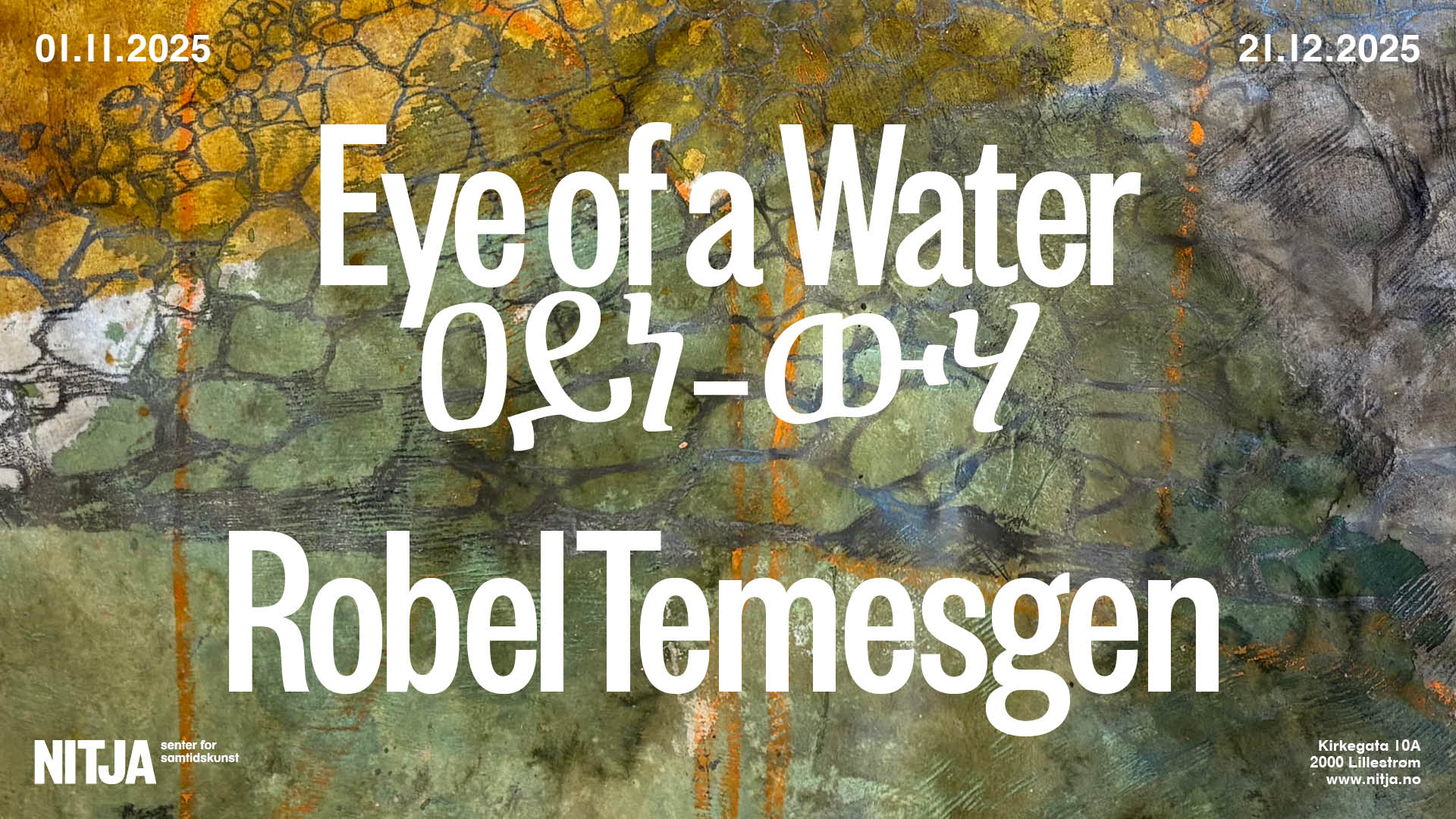






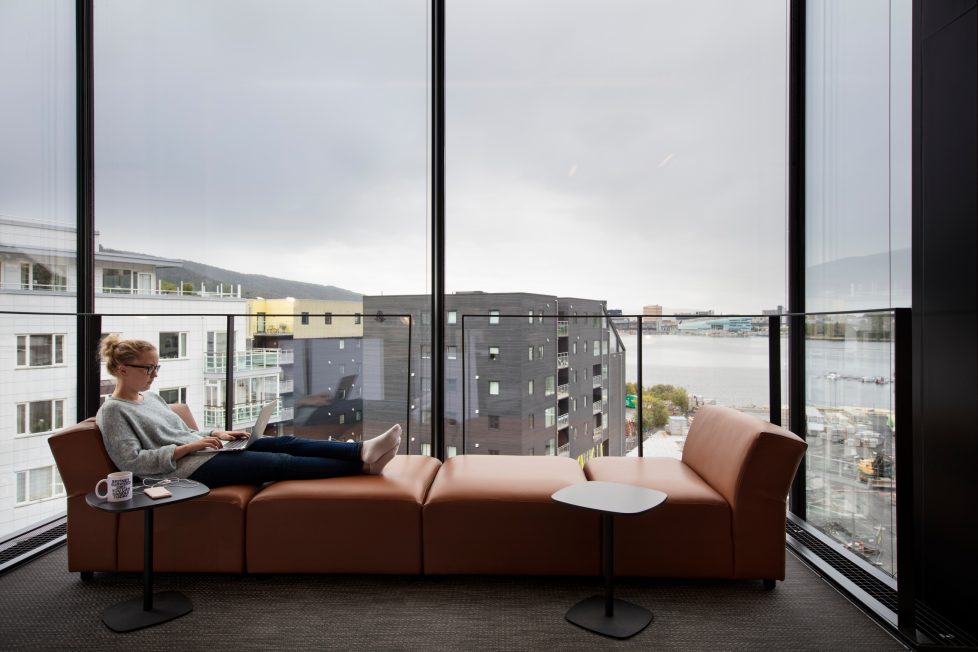


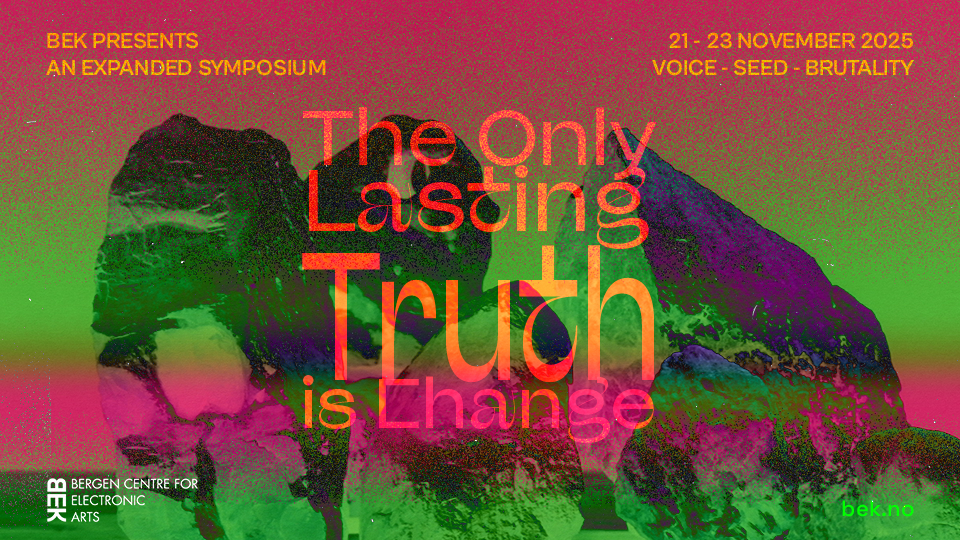

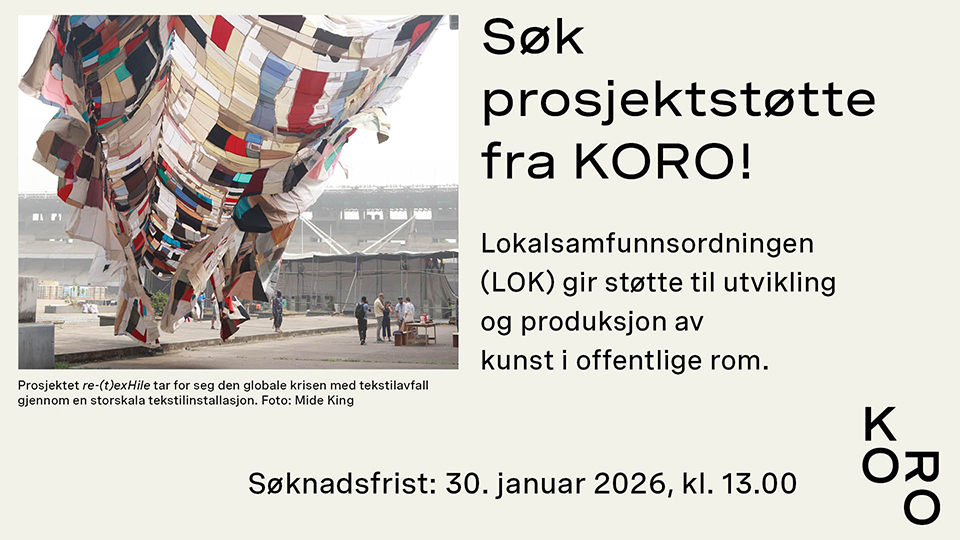
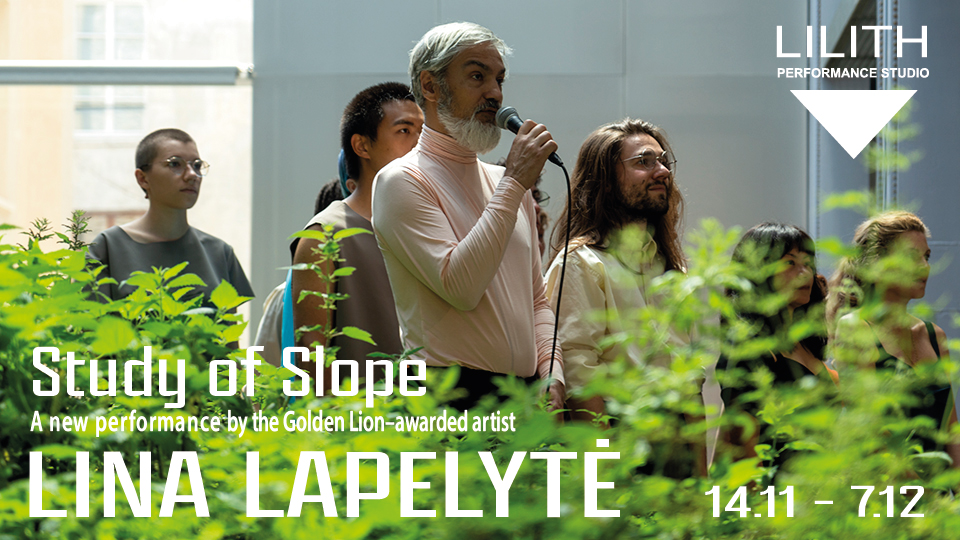
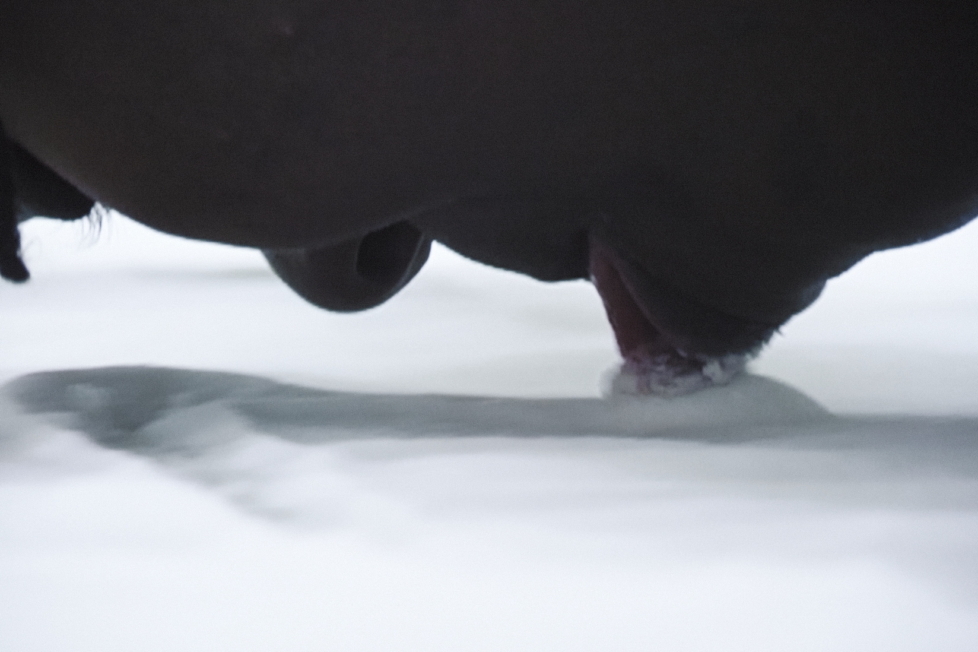
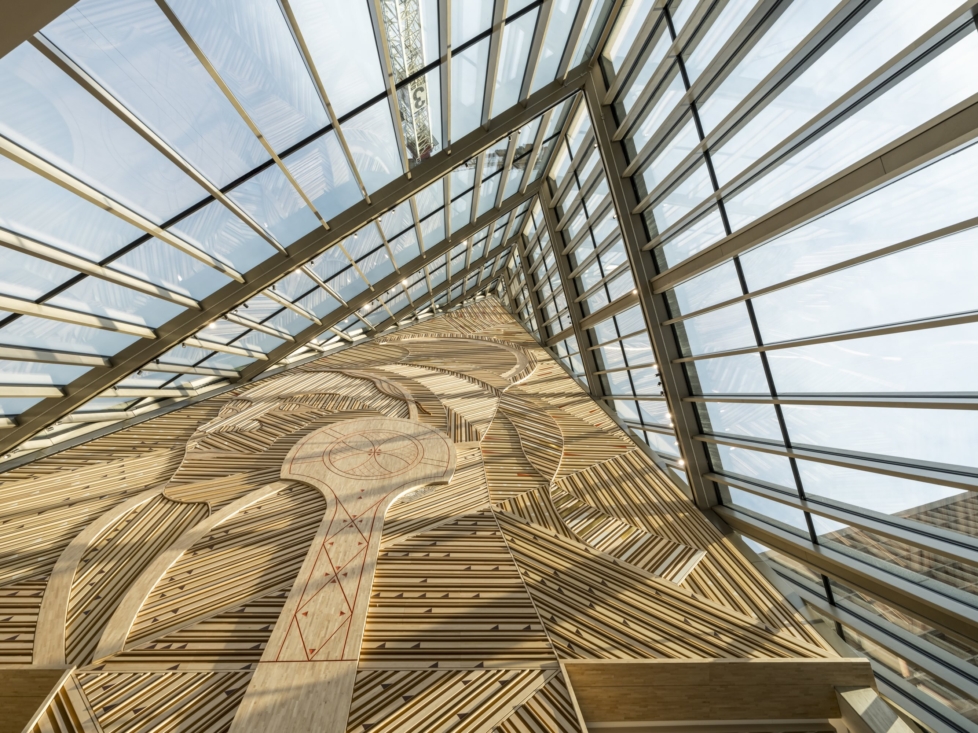
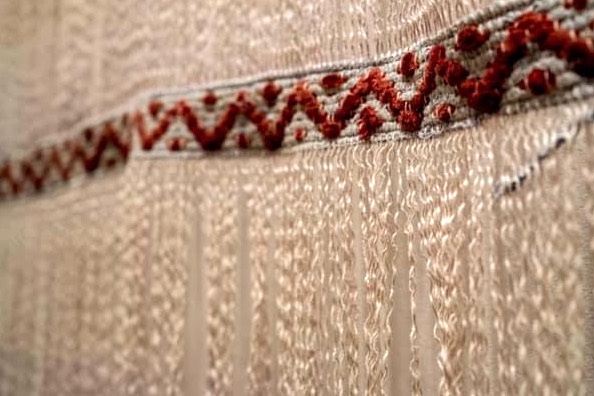
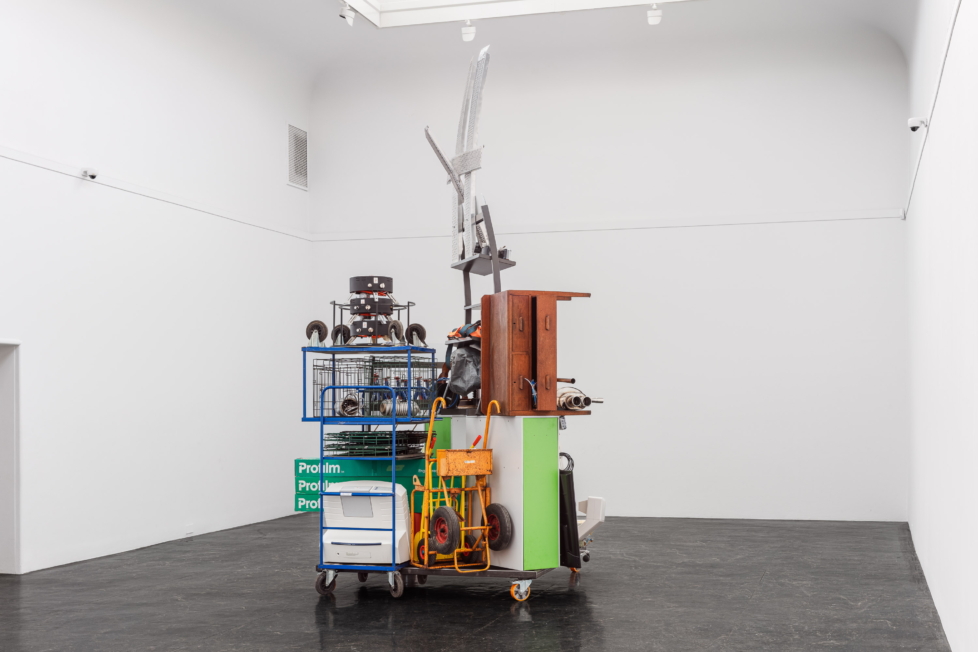
Leserinnlegg